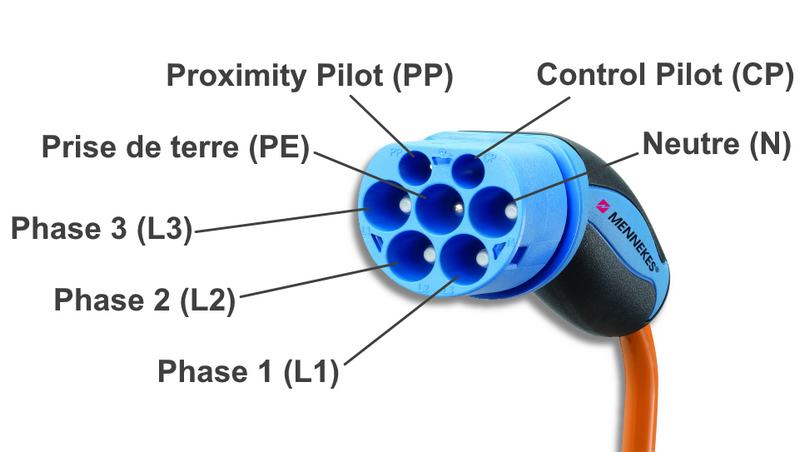CEA et Renault développent un chargeur embarqué bidirectionnel
Publié : 24/01/23, 07:37
Cà est! ils sont enfin sorti du bois, l'equilibrage reseau via les vehicules electriques à grand coup de brevet c'est bientot 
https://www.enerzine.com/cea-et-renault ... 16-2023-01
Vont-ils inventer le minitel2.0, une norme si fermée que seul renault pourra la mettre en oeuvre? Suspens!
En 2040 au moins 10% des constructeurs auront compris à quoi çà peut servir et en 2050 çà sera opperationnel sur le reseau.
En pratique, c'est un chargeur integré à la voiture et comme c'est europeen c'est branché via prise type 2

Pour aller plus loin, il faut comprendre le mode de communication de cette prise type 2 et sans surprise c'est une usine à gaz.
Parfait pour une adoption lente!
Le temps que nos onduleurs hybrides supportent ce standard (HomePlug Green Phy), on sera dejà à là retraite voir peutetre déjà au compost!
La conclusion de cette etude est aux petits oignons, rien à ajouter tant c'est revelateur de la decadence de nos societes industrielles qui preferont toujours les usines à gaz (HomePlug Green Phy) plutot que les trucs simples (CANBus) qui fonctionnent à pas cher.
https://ltu.diva-portal.org/smash/get/d ... TEXT01.pdf
https://www.enerzine.com/cea-et-renault ... 16-2023-01
Vont-ils inventer le minitel2.0, une norme si fermée que seul renault pourra la mettre en oeuvre? Suspens!
En 2040 au moins 10% des constructeurs auront compris à quoi çà peut servir et en 2050 çà sera opperationnel sur le reseau.
En pratique, c'est un chargeur integré à la voiture et comme c'est europeen c'est branché via prise type 2

Pour aller plus loin, il faut comprendre le mode de communication de cette prise type 2 et sans surprise c'est une usine à gaz.
Parfait pour une adoption lente!
Le temps que nos onduleurs hybrides supportent ce standard (HomePlug Green Phy), on sera dejà à là retraite voir peutetre déjà au compost!
La conclusion de cette etude est aux petits oignons, rien à ajouter tant c'est revelateur de la decadence de nos societes industrielles qui preferont toujours les usines à gaz (HomePlug Green Phy) plutot que les trucs simples (CANBus) qui fonctionnent à pas cher.
https://ltu.diva-portal.org/smash/get/d ... TEXT01.pdf
5.2 Are there better solutions?
5.2.1 HomePlug AV modem
A "Down tuned" HomePlug AV modem can act as HomePlug GP modem and this opens
up more hardware/IC options. This way is not limited to Qualcomm solution but a custom
solution can be made "chip up" to follow the HomePlug GP standard even though the chip
is HomePlug AV compliant. While this does have some benefits such as better integration
with the EVSE due to it giving more freedom for the engineers, it might not be completely
possible.
Even though HomePlug GP is a simplified version of HomePlug AV, it does have a few
unique things about it as discussed in the theory section of this thesis. For example the
SLAC process is unique to HomePlug GP and it is unclear if that is possible on a HomePlug
AV modem.
5.2.2 CHAdeMO (le truc simple que l'europe rejete)
While the CHAdeMO charging standard has its own benefits and drawbacks, it does one thing
that in the opinion of the author is better. Instead of creating a whole new communication
standard, it simply uses the CAN Bus. [1]
The Controller Area Network bus has been ubiquitous in the automotive industry since the
1990’s and it is not only mandatory by regulation but also very flexible. Due to it being in
use for so long there are several encryption layers developed on top of the CAN bus that
it offer just as robust security as the HomePlug communication protocol which is ethernet
package based. CAN bus solutions are cheap and easy to come by and in allot of cases would
require no additional hardware from the PEV perspective. This is simply because there is a
very good chance that a PEV already has a CAN bus compatible Electronics Control Unit
(ECU) somewhere close to the charging port that it can just connect to. There would not
be any need for identification and association processes such as SLAC due to identification
being built into the CAN interface, even if dozens of PEVs connect to the same CAN Bus.
Of course there would be drawbacks to a CAN solution. It would require at least two
additional wires and connectors in the charging cable. However that is not absolutely
necessary. For example a system could be developed where if the EVSE and the PEV are
both able to communicate with this higher standard, then there is no need for the Proximity
Pilot signal nor for the Control Pilot signal so those two conductors could be used for CAN
communication.